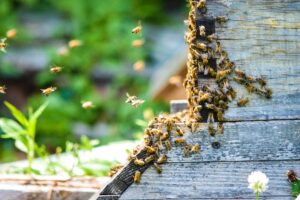Microplastics have become pervasive in our environment and are increasingly difficult to avoid. However, there are strategies we can employ to minimize our exposure to these microscopic pieces of plastic. One significant source of microplastic exposure is through drinking bottled water. Research has shown that bottled water contains thousands of these tiny plastic particles, making it the largest pathway for microplastic ingestion. Experts recommend opting for tap water instead, as it is a safer and more eco-friendly alternative.
Studies have indicated that microplastics can be found in various food and beverage products, including seafood, salt, and even beer. These findings highlight the widespread contamination of our food and drink with plastic particles. To reduce our intake of microplastics, experts suggest choosing fresh, unprocessed foods and beverages whenever possible. By minimizing our consumption of packaged and processed goods, we can significantly lower our exposure to these harmful particles.
It is important to note that microplastics are not only ingested through food and drink but also through the air we breathe. These particles can be released into the atmosphere during industrial activities and other human-made processes, contributing to their presence in our environment. To minimize our inhalation of microplastics, experts recommend improving indoor air quality by ensuring proper ventilation and filtration systems. Additionally, reducing our reliance on single-use plastics, such as plastic bags and straws, can help decrease the overall amount of microplastics in circulation.
While it may be challenging to completely eliminate exposure to microplastics, taking these steps can undoubtedly reduce our intake and protect our health. By choosing tap water over bottled water, opting for fresh and unprocessed foods, improving indoor air quality, and reducing our use of single-use plastics, we can minimize our exposure to these harmful particles. As more research is conducted and awareness is raised, it is crucial for individuals, businesses, and governments to take action in combating the microplastic crisis. Together, we can work towards cleaner and healthier environments for ourselves and future generations.
In conclusion, the issue of microplastic exposure is a growing concern. However, by making simple changes to our daily routines, we can significantly reduce our intake of these harmful particles. It is crucial for individuals to be proactive in their choices and to advocate for sustainable practices on a larger scale. By taking action now, we can create a safer and cleaner world for ourselves and future generations. So, let’s raise our glasses filled with tap water, choose fresh and unprocessed foods, and make conscious decisions to protect ourselves from the omnipresence of microplastics.









